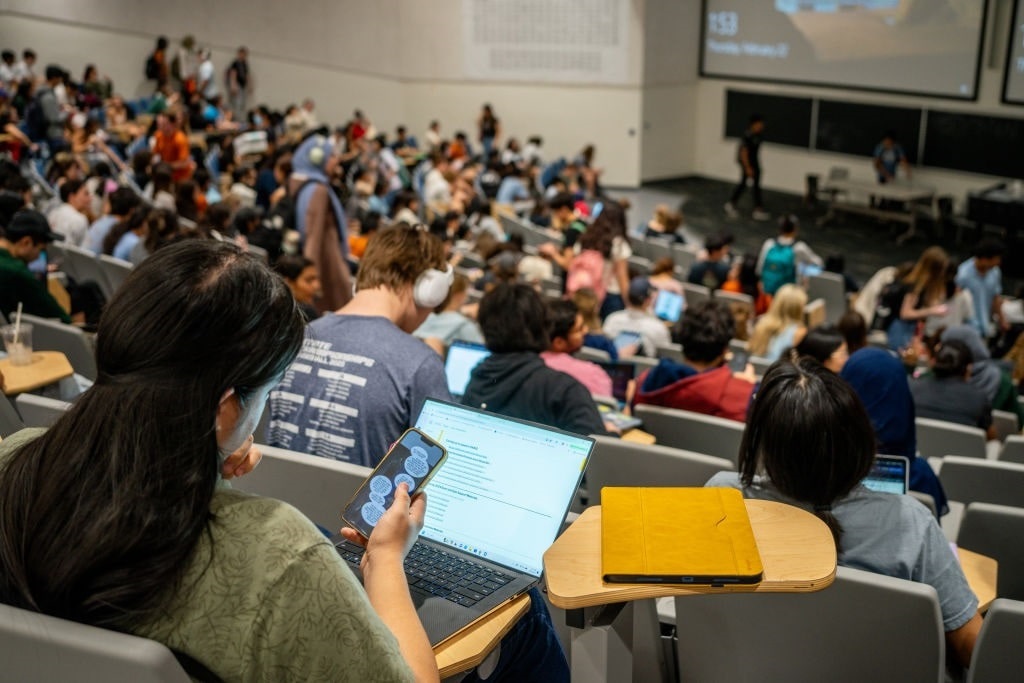President Joe Biden insists that canceling student loan debt is essential to install his Bidenomics vision of growing the economy through the middle out and bottom up. White House data and economic analyses highlight that these forgiveness efforts create massive price tags for cash-strapped US taxpayers. The administration is steamrolling ahead to ensure the rich receive bailouts for their educational pursuits.
Student Loan Forgiveness
The Department of Education outlined five new provisions of the president’s latest student loan debt-relief crusade. These proposals include waiving runaway interest for millions of people, automatically discharging debt for a specific category of borrowers, helping individuals who are enrolled in financial-value institutions, eliminating debt for those who have been in repayment for 20 years or more, and assisting students, dropouts, or graduates facing hardship repaying their obligations.
 According to a new study by the University of Pennsylvania’s Penn-Wharton Budget Model (PWBM), the latest scheme will cost $84 billion. Of this amount, $58 billion will be allocated to canceling accrued or capitalized interest. The second-largest expense will be the $19 billion to abolish student loan debt for borrowers in the repayment stage for two-plus decades. This is followed by another $7 billion dedicated to assist those enduring hardship. The rest of the plan is hard to calculate because the administration failed to provide more details, the Penn-Wharton report noted.
According to a new study by the University of Pennsylvania’s Penn-Wharton Budget Model (PWBM), the latest scheme will cost $84 billion. Of this amount, $58 billion will be allocated to canceling accrued or capitalized interest. The second-largest expense will be the $19 billion to abolish student loan debt for borrowers in the repayment stage for two-plus decades. This is followed by another $7 billion dedicated to assist those enduring hardship. The rest of the plan is hard to calculate because the administration failed to provide more details, the Penn-Wharton report noted.
Overall, the provisions will be in addition to the $475 billion estimated for President Biden’s Saving on a Valuable Education (SAVE) Plan. So, in total, taxpayers are on the hook for $559 billion.
This is unsurprising. But here is something that might make blue-collar folks rage. The economists found that this new debt relief campaign is expected to benefit approximately 750,000 individuals “residing in households that, on average, earn $312,977 in annual household income.”
The White House also has confirmed that the escalation in forgiveness will be eligible for anyone “regardless of income.” Vice President Kamala Harris stated in her announcement: “If you’ve paid undergrad loans for 20-plus years or graduate loans for 25 or more years, your loans will be completely forgiven, regardless of your income and even if you did not graduate.”
The purpose of bailing out the rich, according to the White House, is to stimulate the economy. Although the president has previously stated that he does not want to help those who graduated from Harvard or Yale, the latest talking point is that beneficiaries will now spend more and juice growth prospects.
Regressive
Are student loans a disaster for taxpayers? In 2022, the Government Accountability Office (GAO) warned that taxpayers will lose about $197 billion on student loans completed over the last quarter-century. By comparison, the Department of Education projected that these subsidized lending instruments would net taxpayers a $114 billion gain. Whatever forecast is accurate, it is hard to dispute economists’ contentions that student loan forgiveness primarily aids high-earning individuals and wealthy households.
The widely cited 2020 Brookings Institution report concluded that high-income households stand to benefit the most from student relief. According to the economic research think tank, the highest-income 40% of households owed about 60% of outstanding post-secondary debt and accounted for 75% of payments. By comparison, the lowest-income 40% of households had roughly one-fifth of the remaining debt, representing 10% of the payments. Several entities, including the University of Virginia and the University of Chicago, made similar findings.
In a follow-up 2022 Brookings report, Adam Looney, the Marriner S. Eccles Institute executive director at the University of Utah, averred that “student loan forgiveness is regressive whether measured by income, education, or wealth.” Instead, Looney recommended target relief to correct the vast problems in the system, adding:
“Excluding the value of education from a calculation of net worth while including debt used to finance that education is like measuring a homeowner’s wealth by subtracting their mortgage but ignoring the value of the home itself. You’d find that homeowners were poorer than renters, and that people living in mansions were the poorest members of society.”
Additionally, a 2020 Chicago Booth poll of economists discovered that student loan debt relief is “net regressive” and would “exacerbate US economic inequality.” Even former Treasury Secretary Larry Summers has been vocal that forgiveness programs are regressive and would contribute to inflationary challenges.
The unintended consequences of debt relief have also been well-documented. The funniest contention recently emanated from Rep. Alexandria Ocasio-Cortez (D-NY), who said forgiveness would allow graduates to return to school. So, taxpayers bail out graduates with abysmal credentials only for them to pull a Rodney Dangerfield and repeat the cycle?
An Economy for the Wealthy
As Liberty Nation noted, the current economic landscape is benefiting the wealthy. Many of the fiscal and monetary policies presented since the pandemic have greatly helped the affluent. It is no shock that the wealthiest people have immensely bolstered their net worth by trillions of dollars in four years, according to Federal Reserve data. From corporate subsidies to student loan debt relief, the rich are getting richer thanks to the government – and everyone else is left to foot the bill.




